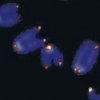- Formiculture.com
- Forums
- Gallery
- Members
- Member Map
- Chat

What is the difference between S.Xyloni and S. InvictA
Started By
AntManiac2310
, Oct 28 2020 7:23 PM
5 replies to this topic
#1
 Offline
-
Posted October 28 2020 - 7:23 PM
Offline
-
Posted October 28 2020 - 7:23 PM
What is the difference between the two?
#2
 Offline
-
Posted October 29 2020 - 3:15 AM
Offline
-
Posted October 29 2020 - 3:15 AM
If I remember a post correctly, xyloni queens have much wider heads, while invicta are quite narrow.
#3
 Offline
-
Posted October 29 2020 - 3:27 AM
Offline
-
Posted October 29 2020 - 3:27 AM
Depending on the region, xyloni will be darker I think. Solenopsis xyloni is also native to the US.
He travels, he seeks the p a r m e s a n.
#4
 Offline
-
Posted October 29 2020 - 4:11 AM
Offline
-
Posted October 29 2020 - 4:11 AM
Solenopsis xyloni are part of the Solenopsis geminata species group. Invicta are part of the S. saevissima species group.
S. xyloni get smaller colonies overall, and have a slower growth rate and typically weaker sting. They tend to have much brighter colors, and they are a native species. They require lower humidity in captivity, and they tend to be at least slightly granivorous, especially in the wild. They also have a jet-black color variant that is most common in Arizona, and this variant tends to be polygynous more often than not. Being in the S. geminata species group, they tend to have wider heads in both queens and majors, as they are used to process the seeds that they harvest. They are also able to hybridize with S. geminata, but this hybrid is rare.
S. invicta, on the other hand, get very large colonies (as large as 400,000 workers) and have a relatively painful sting. Their colors tend to be more subdued than S. xyloni. They have a monogynous and a polygynous variant, but typically the monogynous variant is more widespread and better in captivity. They grow very quickly, being able to reach their maximum colony size in only 2-3 years. Being in the S. saevissima species group, they do not harvest seeds in any capacity, and are very fierce predators, with most of their diet being protein of various prey that they have killed. They are able to hybridize with Solenopsis richteri, and this hybrid is common in places like northern Alabama and Mississippi.
This is really just a few differences, as these two species being in different species groups means that they have relatively little in common. While I would recommend neither species to a beginner antkeeper, S. xyloni is far more forgiving in captivity.
- TennesseeAnts, Somethinghmm and DDD101DDD like this
I like leafcutter ants. Watch The Ultimate Guide to Fungus Growing Ants:
https://youtu.be/VBH...4GkxujxMETFPt8U
This video took like over 100 hours of work, you should for sure watch it.
#5
 Offline
-
Posted October 29 2020 - 5:11 AM
Offline
-
Posted October 29 2020 - 5:11 AM
While I would recommend neither species to a beginner antkeeper, S. xyloni is far more forgiving in captivity.
I second this. However on the other hand, Solenopsis molesta, the Thief Ant, is very easy to contain, and extremely forgiving. They may be tiny, but they're fast growing, polygynous, voracious, and have beautiful coloration, and different colored queens in some regions. I'd recommend them over any fire ant any day.
- TennesseeAnts, Ants_Dakota, MinigunL5 and 1 other like this
"God made..... all the creatures that move along the ground according to their kinds (including ants). And God saw that it was good. Genesis 1:25 NIV version
Keeping:
Formica cf. pallidefulva, cf. incerta, cf. argentea
Formica cf. aserva, cf. subintegra
Myrmica sp.
Lasius neoniger, brevicornis
#6
 Offline
-
Posted October 29 2020 - 7:16 AM
Offline
-
Posted October 29 2020 - 7:16 AM
and they don't need huge formicariums! they can live in tiny spaces for a while.
Go to the ant, you sluggard; consider its ways and be wise! It has no commander, no overseer or ruler, yet it stores its provisions in summer and gathers its food at harvest. -Proverbs 6: 6-8
My Ant Shop Here I have PPQ-526 permits to ship ants nationwide
Attention Ant-Keepers in South Dakota! Join the SoDak(Society Of Dakotan Ant Keepers)
0 user(s) are reading this topic
0 members, 0 guests, 0 anonymous users



















